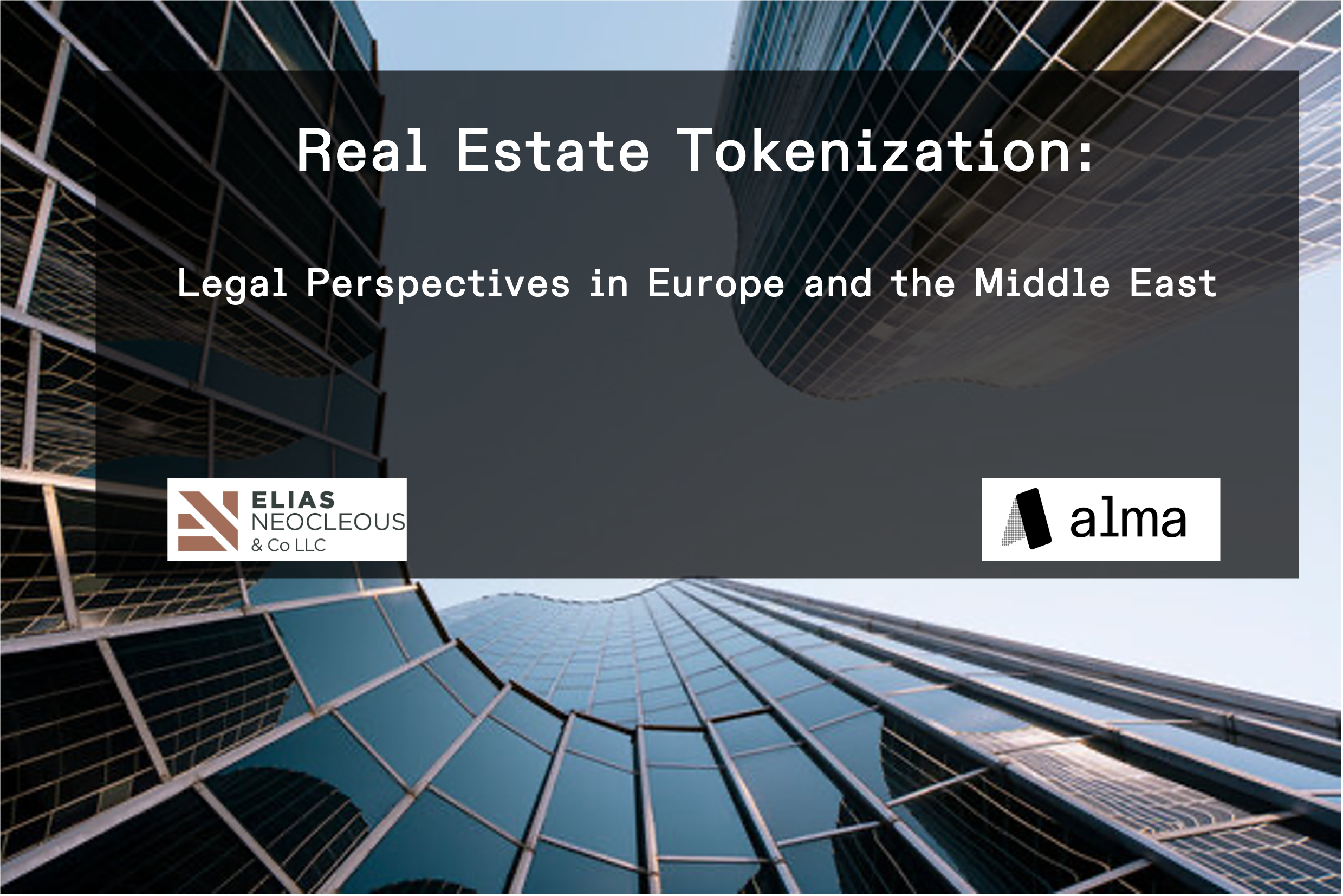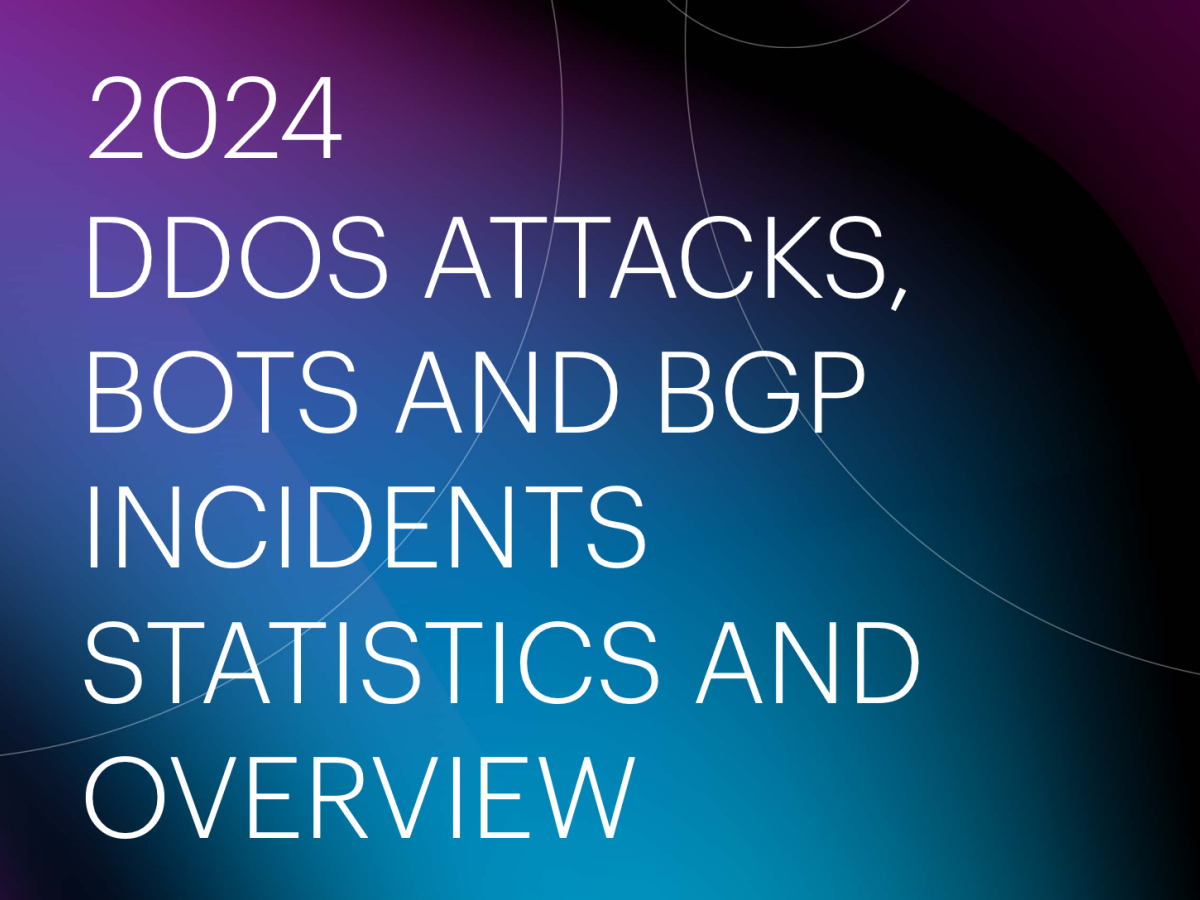
Written by :
- Sergei Ivanov (Founder & CEO, Alma), Member of the TechIsland PropTech WG and Dubai PropTech Business Group,
- Michael Pelosi (Senior Legal Counsel, Elias Neocleous & Co LLC),
- Fabian Cabeza (Legal Consultant, Elias Neocleous & Co LLC)
Introduction – Global legislation trends on real estate tokenization: In March 2025, the Dubai Land Department (DLD) made major headlines by launching a pilot project to tokenize property title deeds, becoming the first land registry in the Middle East to implement blockchain-based property tokenization. This groundbreaking initiative is projected to create a AED 60 billion (USD 16.3 billion) tokenized real estate market by 2033 (around 7% of Dubai’s property transactions). Dubai’s Director General of DLD hailed tokenization as a “revolutionary tool” that simplifies and enhances property buying, selling, and investment by converting real estate into digital tokens. In other words, what was long discussed in theory is becoming a practical reality. But what does that mean?
What Is Real Estate Tokenization? At its core, real estate tokenization means converting ownership or economic rights in a property into digital tokens on a blockchain. Each token represents a fractional share of the property’s value or income. In practice, this often involves placing a property into a legal entity (such as a special-purpose vehicle, or SPV) and issuing tokens that represent shares or bonds of that entity, entitling holders to a portion of the property’s ownership or economic returns (rental income, sale proceeds, etc.). This concept combines traditional fractional ownership with blockchain technology to create transferable digital assets. For investors, it functions somewhat like investing in real estate investment trusts (REITs) or crowdfunding platforms – but with blockchain, ownership can be divided into much smaller increments and traded more easily on secondary markets.
Why Tokenize? Key Benefits: Tokenization has generated buzz because it can potentially solve longstanding problems in real estate investment. The key benefits include:
- Increased Liquidity: Property is famously illiquid – selling a building can take months. By tokenizing, owners can trade small shares of a property on digital marketplaces, enabling faster buy-sell transactions . An investor can liquidate a fraction of their real estate holding almost as easily as selling stocks, which means access to cash when needed without selling the entire asset.
- Lower Barriers to Entry: Tokenization allows high-value assets to be split into many small pieces. Investors can participate with a few hundred dollars instead of hundreds of thousands . This democratizes access to real estate, enabling a wider pool of investors (including younger or less-wealthy individuals) to invest in property assets that were previously out of reach.
- Transparency and Security: Blockchain’s immutable ledger records every token transaction and ownership change, providing a clear audit trail. This can reduce fraud and errors in property records. Investors also benefit from real-time transparency of who owns what share, and smart contracts can automate enforcement of rights (like distributing rental income to token holders) with high accuracy .
- Global Accessibility: A tokenized real estate platform online can attract investors globally (subject to legal compliance). Someone in Europe or Asia can easily invest in a tokenized property in Dubai, bringing in cross-border capital . In the long run, this broader investor reach could increase property values and allow unprecedented diversification (investors holding small stakes in properties across different countries).
- Efficiency & Lower Costs: By reducing intermediaries and automating processes, tokenization can make transactions faster and cheaper. Smart contracts can handle tasks such as instantly splitting rent payments among token holders or transferring ownership without need for extensive paperwork, thereby cutting administrative and transaction costs . One survey found that 58% of high-net-worth investors see lower transaction costs as a key reason to invest in tokenized assets .
These benefits explain why forward-thinking jurisdictions are embracing tokenization to spur innovation in the property sector . However, alongside the excitement, it is crucial to address the legal and regulatory considerations that come with this new model of real estate investment.
Legal Considerations for Tokenized Real Estate
Real estate is a heavily regulated domain, and introducing blockchain tokens does not change that reality. Issuers and investors in tokenized property must navigate two layers of law: (1) traditional securities/real estate regulations, and (2) newer rules for digital assets. Below, we focus on the European context for these legal issues (many principles are similar in other regions), and later we touch on the Middle East. The overarching principle espoused by regulators is often “same activities, same risks, same rules” – meaning a tokenized investment will be regulated just like a traditional investment if it behaves like one. In short, calling something a “token” doesn’t exempt it from the law. If it functions like a security, it will be treated as a security, with significant implications for compliance.
Are Real Estate Tokens Securities? (EU Classification)
In most cases, yes – a real estate token giving investors a share of income or value is likely to be deemed a security under EU law. Specifically, it may qualify as a transferable security under MiFID II (the EU’s Markets in Financial Instruments Directive), which defines transferable securities broadly as any class of securities negotiable on capital markets that confer rights similar to shares in companies with the exception of instruments of payments. If a token grants economic rights (like dividends from rent or a share of sale proceeds) or governance rights in an SPV that owns property, it is effectively equivalent to a share or bond of that company, just in digital form . Regulators apply a substance-over-form, technology-neutral approach: the fact that these rights are encoded on a blockchain token doesn’t change their essential nature . For example, a token representing 0.1% ownership in a property holding company – with rights to 0.1% of rental income and sale profit – has all the hallmarks of a security (fungible, tradable, conveys investment rights) and will be regulated as such . It Is Important to assess each token on a case-by-case basis guided by the token's factual features rather than the label given.
The consequence of being classified as a security is that existing securities laws apply. In the EU, that means compliance with the full framework of financial regulations (MiFID II, the Prospectus Regulation, etc.), rather than the newer crypto-asset regime. Notably, the EU’s new Markets in Crypto-Assets Regulation (MiCA) explicitly excludes from its scope any tokens that qualify as MiFID II financial instruments (i.e. securities) . MiCA is designed to cover crypto-assets that aren’t already governed by existing EU financial services laws; security tokens are carved out because they fall under those pre-existing laws. In summary: real estate tokens in Europe that have the characteristics of securities and must comply with the same requirements as a traditional securities offering . (An exception might be a token structured purely as an “asset-referenced token” tracking a property’s price without conveying ownership – such as a stablecoin backed by real estate – which could fall under MiCA’s rules instead.)
Offering Tokens to Investors: Private vs Public Routes
If your real estate token is a security, how can you offer it to investors? This brings in the EU Prospectus Regulation, which generally requires a published prospectus (approved by the national financial regulator) for any offer of securities to the public. A prospectus is a detailed disclosure document (similar to an IPO prospectus) aimed at informing and protecting investors. Preparing one is a significant undertaking – costly and time-consuming – which may be impractical for a single-property tokenization startup . There are, however, several exemptions to the need forthe full prospectus requirement .For example: offering only to qualified/institutional investors, limiting the offer to a small number of individuals, setting a high minimum investment (e.g. €100,000) per investor, or keeping the total raise below a certain threshold (often €1 million, or up to €8 million in some countries) . By structuring the sale as a private placement under the applicable exemptions, the issuer may not requirea public prospectus. If nevertheless the issuer ever wants to invite broad retail participation beyond the exemption limits, a full approved prospectus becomes mandatory .
Using these exemptions also means imposing certain marketing and transfer restrictions. For example, if you claim to only sell to, say, 100 people in a country (to stay under the 150-person exemption), you must avoid any broad advertising that could be deemed a public offer . Sales are typically done through invite-only platforms, and interested investors undergo verification to ensure they qualify. Likewise, token smart contracts can be programmed so that transfers are restricted to whitelisted (pre-approved) wallets, preventing free trading to the general public until legal requirements are met . These measures ensure the offering remains private; otherwise, unrestricted trading could inadvertently create an unregulated public offering.
To illustrate the differences in regulatory requirements, below is a comparison of a private (restricted) token offering vs. a public (retail) offering in the EU subject also to any applicable national laws of EU Member States:
Compliance snapshot: Private Placement vs Public Offering of security tokens in the EU.
Aspect
Private Placement (Restricted Offering)
Public Offering (Retail Accessible)
Investor Base
Limited to accredited/qualified investors, or a small number of people.
Open to the general public (including retail investors).
Regulatory Filing
Prospectus: Not required (issuer relies on exemptions like offering only to professional investors or <150 persons per country).. Regulator Approval: Not needed pre-sale (no authority approval of documents), though anti-fraud laws still apply.
Prospectus: Required – a full prospectus must be prepared and approved by the national regulator before any public sale, with detailed disclosures . Regulator Approval: Mandatory – authorities vet/approve the prospectus and may supervise the offering.
Advertising
Quiet, targeted outreach only to eligible investors. No public marketing (to avoid it being deemed an unapproved public offer). Often done via invite-only portals or private networks.
Can be advertised broadly once the prospectus is approved – e.g. websites, media campaigns – albeit with standard truthfulness/fairness rules.
KYC/AML Compliance
Required for all investors: the issuer/platform must verify identity (Know-Your-Customer) and vet funds (Anti-Money Laundering) for each participant . Done privately during onboarding; anonymity is not permitted even in private sales.
Required for all purchasers as well. If tokens trade on a public exchange, that exchange will enforce KYC/AML for all users. Essentially identical compliance checks – no anonymous buyers in regulated offerings .
Token Transferability
Often restricted. Tokens may be locked or only transferable among whitelisted investors to ensure they aren’t freely sold or divided into portions below the minimum investment level to unvetted people. Some issuers legally or technologically prevent resale to the public.
Freely tradable after issuance, but usually designed to be traded only on licenced platforms or exchanges. This allows any retail buyer to trade (similar to stocks on a stock exchange) under market supervision . Direct peer-to-peer transfers might be permitted, but the token is usually designed to trade on approved venues to maintain oversight.
Ongoing Reporting
Not legally required beyond any contractual promises. Many private issuers still provide periodic updates to investors, but there’s no statutory obligation (aside from general anti-fraud laws against misleading statements) .
Investor Protections
Sophisticated investors are presumed to understand the risks, so there is less regulatory intervention. No specific caps on investment amounts; terms like dispute resolution or exit rights are set by contract.
Extensive statutory protections. For example, prospectus liability (investors can sue if the document was misleading), a right to withdraw within a cooling-off period, possibly a required simplified information document for retail investors, and sometimes limits on how much a retail investor can invest in such offerings . Regulators also keep an eye on sales practices to prevent mis-selling .
Table: Key differences between a private placement and a public STO (Security Token Offering) in the EU.
As the table shows, choosing a private or public offering route will significantly affect the compliance burden for the issuer and the experience/protections for investors. Many real estate token projects start with a private placement approach to avoid heavy upfront regulation, especially for pilot deals, while keeping the door open for a public offering in the future if the project scales up.
Other Compliance Obligations: KYC/AML and Investor Protection
Whether an offering is private or public, certain obligations are universal. Chief among these are Know Your Customer (KYC) and Anti-Money Laundering (AML) requirements. In the EU – as in most jurisdictions – any platform or issuer dealing in tokenized assets must implement robust procedures to verify investor identities and the source of funds . Just because transactions occur on a blockchain does not make them anonymous in the eyes of regulators; in fact, authorities are extra cautious with crypto-assets to prevent illicit activity. Investors should expect to provide standard identification documents (e.g. passport, proof of address, etc.) and undergo checks against sanctions or watchlists before being allowed to purchase tokens. Transactions will be monitored for suspicious activity, and issuers face severe penalties for non-compliance with AML laws . MiCA provides for licencing of crypto-asset service providers, meaning they are obliged entitiesunder the relevant AML laws and Directives. In practical terms, investing in a tokenized real estate offering in the form of a financial instrument will feel much like opening a brokerage account and investing in shares or any regulated financial product.
Investor protection is another cornerstone of securities law. If tokens are offered to retail investors, regulators require that those investors receive proper disclosures and are not misled. In a public STO, the prospectus itself is the primary disclosure document, detailing all risks. Even in private placements, reputable issuers provide an offering memorandum outlining the business model, token holder rights, and risk factors. Moreover, anyone marketing or advising on token investments in the EU must comply with MiFID II conduct rules – for example, ensuring the investment is suitable for the client’s profile and not aggressively selling inappropriate products . Some jurisdictions may also cap how much a non-accredited individual can invest in such high-risk offerings to prevent overexposure . Investors should also be aware of their legal rights as token holders. These should be clearly defined in the legal documentation (e.g. the SPV’s constitutional documents or the token terms & conditions). Rights can include economic entitlements (profit share, dividends), governance/voting rights (if any), and information rights (regular reports on the property). If something goes wrong – say, mismanagement of funds or failure to pay out income – token holders may have legal recourse similar to minority shareholders in a company (e.g. the ability to sue for misrepresentation or breach of duty). That said, enforcement can be tricky if token holders are globally dispersed, and questions of applicable jurisdiction can arise in disputes . This is an evolving area, underscoring the importance of careful legal structuring and for investors to understand the terms of their token holdings.
How Legal Structuring Affects Compliance
Compliance and investor rights are deeply intertwined with how a tokenization deal is structured. Issuers must work within legal frameworks – attempting an informal approach without proper legal structure is a recipe for regulatory violations or uncertainty around investors’ rights . The good news is that legal precedent is growing: it has been proven that security tokens can be issued in compliance with EU laws . The process usually involves using the traditional legal machinery (e.g. issuing shares or bonds of a company) and augmenting it with blockchain technology, rather than trying to replace the legal underpinnings entirely . Investors evaluating a token offering should always examine what type of instrument the token represents (equity, debt, revenue share, etc.) and what specific rights and restrictions come with it .
Outlook – Tokenization’s Future in Europe & the Middle East
Real estate tokenization is currently reaching a pivotal point globally, with significant developments such as Dubai's successful pilot program attracting increased attention from investors, developers, and regulators. Europe’s evolving landscape, including the EU’s Markets in Crypto-Assets (MiCA) framework for qualifying tokens and established MiFID II regulations for security tokens, provides certainty and encourages broader market participation. The introduction of the EU’s DLT Pilot Regime further supports the growth of tokenized asset markets, improving liquidity and making tokenized real estate more attractive and accessible to investors.
In the Middle East, Dubai is setting a strong precedent by actively involving government entities such as the Dubai Land Department and the Virtual Assets Regulatory Authority (VARA). This proactive approach significantly boosts investor confidence and positions the region as a global hub for tokenized real estate. Growing interest among younger, tech-savvy investors further highlights the market’s potential. Ultimately, technological advances coupled with clear and harmonized regulatory frameworks are essential to the mainstream adoption of real estate tokenization, offering a promising outlook where property investment becomes simpler, more transparent, and accessible to all.
Why This Matters for Cyprus
Being at the forefront of technological change and integrating real estate tokenization into Cyprus’s property market could yield significant benefits for the nation. If implemented correctly, the adoption of blockchain technology can enhance transparency and efficiency in property transactions, attracting both local and international investors. This innovation aligns with the country’s strategic efforts to modernize its financial and real estate sectors and to establish itself as a tech hub, potentially boosting economic growth and solidifying its position as a forward-thinking nation. Moreover, as Cyprus continues to recover from past economic challenges, embracing such technological advancements can contribute to a more resilient and diversified economy.


